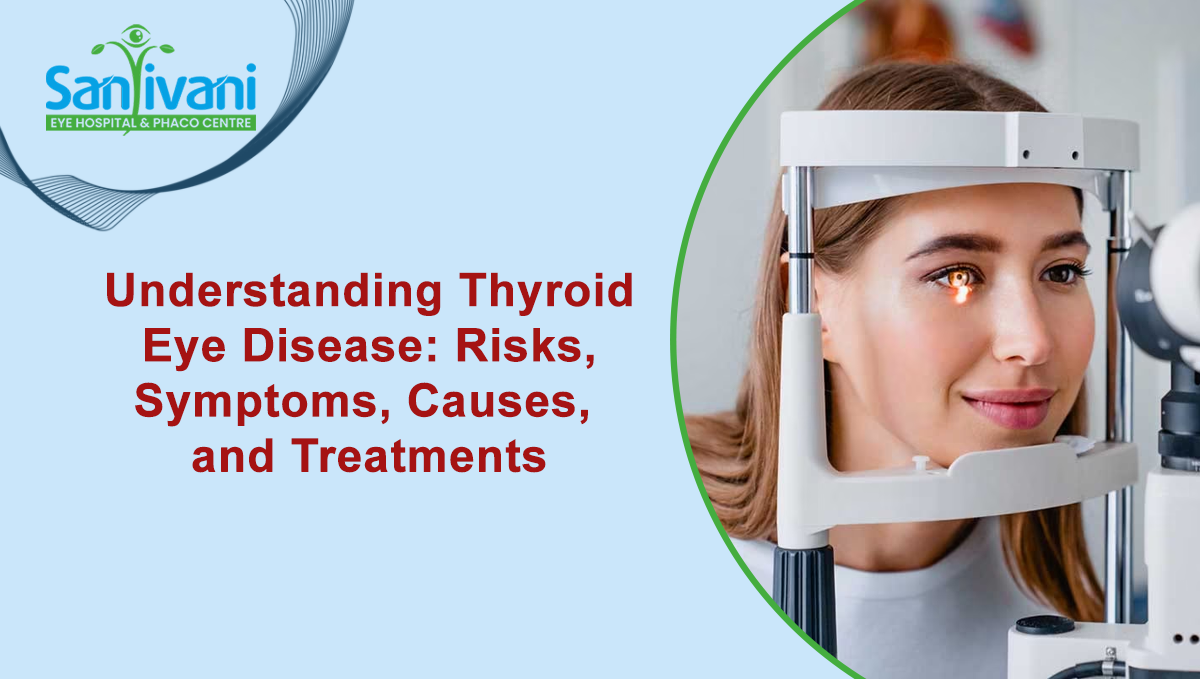
Understanding Thyroid Eye Disease: Risks, Symptoms, Causes, and Treatments
Introduction
Thyroid Eye Disease (TED), also known as Graves' Ophthalmopathy or Thyroid-Associated Orbitopathy, is a condition that affects the eyes and is often associated with an overactive thyroid gland (hyperthyroidism). This blog will delve into the risks, symptoms, causes, and available treatments for this complex condition.
Risks :
Thyroid Eye Disease primarily affects individuals with hyperthyroidism, although it can occur in those with normal or underactive thyroid function. Other risk factors include:
- Gender : Women are more likely to develop TED than men.
- Smoking : Smoking increases the risk and severity of TED.
- Genetics :A family history of thyroid disorders or autoimmune diseases can predispose individuals to TED.
- Age :TED typically occurs between the ages of 30 and 50, although it can affect people of any age.
Symptoms :
The symptoms of Thyroid Eye Disease can vary in severity and may include:
- Eye Bulging (Proptosis) : The eyes may protrude forward due to swelling of the muscles and tissues behind the eyes.
- Eye Redness and Irritation :The eyes may appear red, inflamed, and feel gritty or dry.
- Double Vision (Diplopia) :Misalignment of the eyes can lead to double vision.
- Eyelid Retraction :The upper eyelids may be elevated, making it difficult to fully close the eyes.
- Swelling and Inflammation :The tissues around the eyes may become swollen and tender to the touch.
- Vision Changes :Blurred vision or changes in vision acuity can occur due to pressure on the optic nerve.
Causes :
Thyroid Eye Disease is an autoimmune condition, meaning the body's immune system mistakenly attacks its own tissues. In TED, the immune system targets the muscles and tissues around the eyes, leading to inflammation and swelling. The exact cause of this autoimmune response is not fully understood, but it is believed to involve a combination of genetic predisposition and environmental factors, such as smoking and stress. Additionally, levels of certain immune system proteins called cytokines may play a role in the development and progression of TED
Treatment :
The management of Thyroid Eye Disease often involves a multidisciplinary approach, including endocrinologists, ophthalmologists, and sometimes surgeons. Treatment aims to alleviate symptoms, prevent complications, and improve the overall quality of life for patients. Some treatment options include:
- Medications : Corticosteroids, such as prednisone, may be prescribed to reduce inflammation and swelling. Other medications, such as immunosuppressants or biologics, may be used in severe cases or when steroids are not effective.
- Eye Drops and Lubricants : Lubricating eye drops can help relieve dryness and irritation. Anti-inflammatory eye drops may also be prescribed to reduce inflammation and redness.
- Teprotumumab (Tepezza) :This FDA-approved biologic medication targets the underlying cause of TED by blocking a specific pathway involved in inflammation and tissue remodeling. It has been shown to improve eye bulging and other symptoms in clinical trials.
- Surgery :In cases of severe TED or when other treatments are ineffective, surgery may be necessary to correct eye misalignment, reduce proptosis, or decompress the optic nerve. Surgical options may include orbital decompression, eyelid surgery, or strabismus surgery.
- Smoking Cessation:Quitting smoking is crucial for managing TED, as smoking can exacerbate symptoms and increase the risk of complications.
Conclusion
Thyroid Eye Disease is a complex condition that can have a significant impact on both physical and emotional well-being. Early detection and prompt treatment are essential for minimizing symptoms and preventing long-term complications. If you experience any symptoms of TED, such as eye bulging, redness, or double vision, it is important to seek medical attention from a qualified healthcare professional.